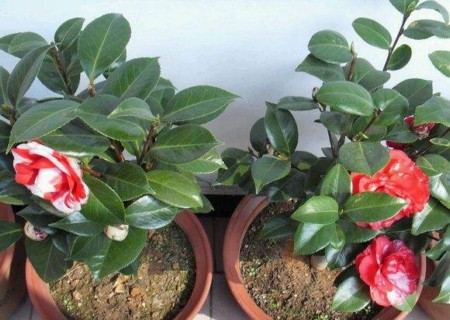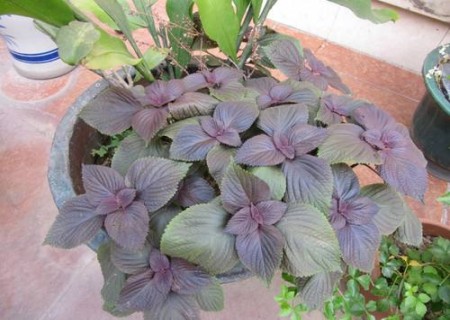Seed planting method of potted Camellia
Camellia blossoms in winter and spring, full of flowers, dignified and elegant, is one of the top ten traditional Chinese flowers, but also one of the world famous flowers. Guo Moruo praised and said: "A tree of camellias is red in the morning, while a hundred flowers are full of clouds." Camellia not only has the proud plum style of "only camellia is very durable, but only can occupy the spring breeze in the deep moon", but also has the bright color of Ling peony of "flowers are numerous and bright red, deeply seizing Xiaoxia", so it has been a very famous woody flower since ancient times. it reached its peak in the Tang and Song dynasties, and caused a sensation after it was introduced to Europe in the 17th century, thus gaining the reputation of "world famous flowers".
Under the condition of pot culture, especially in the non-origin of camellia, camellia generally bear little fruit, only under the conditions of low degree of single petal or stamen petal, normal pistil development, artificial pollination and suitable temperature and humidity. to get seeds with the ability to germinate. The seed planting method of camellia is introduced below.

Seed treatment:
When the capsule is reddish and cracked, the fruit can be harvested and the seeds can be removed in time. In order to test the possibility of seed germination, it can be placed in an empty vessel filled with clear water. If the seed floats on the water, it shows that the seed is empty and does not germinate after sowing; if the seed sinks in the water, it means that the seed has a full seed embryo and can germinate. Because of the high water content of Camellia seed, if it is dried and stored directly after removal, it will lose its germination power rapidly due to the loss of water. The more feasible method is:
After the seeds are lifted out of the clear water and stored in fine sand with moderate dry and wet conditions, the water content of the sand mud should be clustered and loosened, and when the radicles of the seeds are exposed in February-March of the next spring, they can be sown in loose and fertile potted soil or seedling beds.
If in the south of the Yangtze River, it can also be sowed on the open field seedbed with picking, covering soft grass or pine needle to keep warm and moisturizing in winter, which can also play a role in promoting germination, and the germination rate is higher than that of spring sowing.
Camellia seed seedlings grow slowly in the first 1-2 years, but accelerate after 3-4 years, and usually take 4-8 years or more to bloom. Therefore, in productive cultivation, the seedlings are generally bred only by cutting or grafting, but the seedlings must be raised by sowing in camellia cross breeding.
Sowing method:
In October, early and mid-October, put the harvested fruit in an indoor ventilated place to dry, wait for the capsule to crack and take out the seed, sow immediately. If you cannot sow seeds immediately in autumn, you need to hide them in sand and sow them in February of the following year. Seeds can be mixed with new high-fat membrane before sowing, and the germination rate of autumn sowing is higher than that of spring sowing.
The sowing of camellias is suitable for single or semidouble varieties. The seeds are ready for sowing when they mature in the middle of October. Shallow sowing is better, vermiculite as substrate, covering 6 mm, room temperature 21 ℃, light for 10 hours per night, can promote seed germination, germination begins 15 days after sowing, seedling height reaches 8 cm within 30 days, seedlings are transplanted when they have 2 or 3 leaves.
1. Soil
First of all, we should know that soil is the fundamental condition for the growth of camellia, so the choice of soil is also very important. generally, when we choose soil, we should choose soil with high humus and slightly acidic soil. the pH value of general soil is between 5 and 6.5.
2. Temperature
In general, the suitable growth temperature of camellia is 18-25 degrees Celsius, and the temperature of the environment is too high or too low is not conducive to the growth of camellias, especially in winter, move the plants to the indoor growth, move the plants to the balcony at noon, and pay attention to sunscreen in summer to prevent the temperature from being too high.
3. Watering
In general, camellias like to grow in a humid environment, so we should mainly water camellias, but we should pay attention to keeping the soil not too dry or too wet, generally watering more in spring and summer, which is also conducive to the growth of camellias. In winter, we should pay attention to less watering, it is better to water once every two to three days.
4. Fertilization
Camellia is a fertilizer-loving plant, so in the process of breeding, pay attention to fertilization, generally in the growing period, add phosphorus and potassium fertilizer, which is also conducive to the growth of camellia, so as to make the flowers bloom more luxuriantly, at the same time, the main fertilization should not be too much.
5. Pruning
Pruning work is also very important, generally wait until the camellia buds are dense, it is recommended to carry out regular pruning work, cut off weak branches, finishing buds, but also can promote the absorption of nutrients.
6. Diseases and insect pests
Camellia is also very prone to diseases and insect pests, generally there are black mold, anthrax these two kinds of diseases and insect pests, pay attention to pay attention to spraying some diseases and insect pests to camellia during the period of diseases and insect pests, it is good to play a good role in promoting growth.
Time: 2019-05-24 Click:
- Prev

Planting and cultivation methods of four Seasons clove (Syringa microphylla)
Cloves of the four seasons, namely cloves with slender branches, beautiful trees and bright colors, bloom twice a year. They are excellent flowering shrubs in gardens. They are suitable for planting in gardens, residential areas, hospitals, schools, kindergartens or other gardens and scenic spots. They can be planted alone, in clusters or on roadsides, lawns, corners and forest edges.
- Next

Can perilla be potted? Planting method of potted perilla
Perilla is a strange delicacy on the dinner table, and it is also a famous medicine that has been handed down for thousands of years. The little purple leaves have magical effects. Perilla is three kinds of traditional Chinese medicine: perilla leaf, perilla stem and perilla seed. Because they all come from the Labiatae plant perilla and are often used together in clinic, it is sometimes referred to as perilla for short.
Related
- Fuxing push coffee new agricultural production and marketing class: lack of small-scale processing plants
- Jujube rice field leisure farm deep ploughing Yilan for five years to create a space for organic food and play
- Nongyu Farm-A trial of organic papaya for brave women with advanced technology
- Four points for attention in the prevention and control of diseases and insect pests of edible fungi
- How to add nutrient solution to Edible Fungi
- Is there any good way to control edible fungus mites?
- Open Inoculation Technology of Edible Fungi
- Is there any clever way to use fertilizer for edible fungus in winter?
- What agents are used to kill the pathogens of edible fungi in the mushroom shed?
- Rapid drying of Edible Fungi

